Visit Report 2012
[Source: Tim Bailey and Carrie Lees, from the October 2012 edition of The Parish Link of St Mary’s, Hampton]
In May 2012, Carrie Lees, Tanja Marsen, Tim Bailey and Derek Winterburn travelled to Mozambique to follow up on projects that are part of the Hampton Mandimba partnership, which has been running since 2005. Projects include church and well-building, support for orphans to attend school (the Good Seeds project), sewing and involvement in Health care and teaching.
It is easy to forget how easy our day to day life is. Every morning, I turn on the shower and wait for the water to reach the right temperature. Many people in the world would dream of that luxury. I had a glimpse of their perspective for two weeks this year.
In May 2012 four members of St Mary’s visited our sister church of St Paul (San Paolo) in Mandimba. Mozambique.
The main aims of the trip were to follow up on projects sponsored by St Mary’s, to help train the catechists (Bible teachers), offer health advice, and perhaps most importantly to strengthen the bond with our brothers and sisters in Christ.
An important point of contact is with Francisco Bulaque, the vicar of St Paul’s and we worked closely with Micael Calimba, a project ‘coach’ whose salary we pay. We also made a visit to the home of Bishop Mark and Helen van Koevering in the town of Lichinga about 150km north of Mandimba.
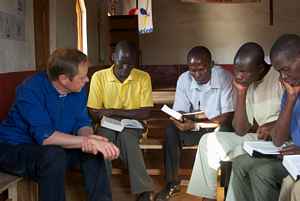
Mandimba is located in remote and rural north-west Mozambique. There is no industry and the only offices belong to the government, who seem to be the largest employer in this area. Everyone lives a ‘close to subsistence’ existence. The Portuguese colonial past has not left behind a good education system.
Our frustration with trying to organise and encourage progress with projects was brought into perspective when it was pointed nun that the Africans there have a very different skill set to us Europeans: we would not survive more than a month in their environment.
A number of medical cases touched our hearts.
Maria is a two year old girl with hydrocephalus. She has been supported by St Mary’s for several Years and we visited her and her family in May. We were able to facilitate a visit to a hospital where she has started receiving treatment from doctors.
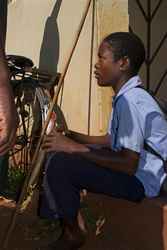
Eduardo Mimo is ten years old and has been crippled since birth. He has never had a wheelchair and is often left to watch the other children play. Thanks to St Mary’s support, Eduardo will now have a wheelchair and some independence.
Another case was that of a young boy who sustained a burn on his leg from the household fire used for cooking. A large area of his skin came away when his burning trousers were removed. When we saw him he hadn't received any medical attention for five days, but we persuaded his parents to take him to hospital, and he had already started to heal a couple of days after we had seen him.
Food is basic and unvaried. A maize porridge is part of the staple diet and holds no nutritional value. It is used mainly as filler in a meal. There is no running water in most of the town. Electricity is intermittent. Health care facilities amount to a bed (no bed linen), some medicine (intermittent supplies) and one doctor for the whole hospital.
Life there is simple and hard. But there is a passionate love for the church, the Bible and Jesus at St Paul’s. From the financial, logistical and prayerful help of St Mary’s, a major church has been established in Mandimba, with other churches built in the outlying villages. Funds from St Mary’s are helping those with medical needs, and the church is expanding. Please continue with your prayers.
Tim Bailey
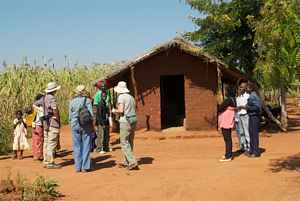
The main health threats are tropical diseases such as malaria and bilharzia, worms of various descriptions, HIV and Aids. But also diarrhoea, pneumonia and measles; while we treat or prevent these in the UK and they generally pose little threat to us, in Niassa, where the population lives on a diet of maize porridge, with poor sanitation, generally no running water, and scarce medicines, they are common and life-threatening. Pregnancy and childbirth are also high risk, while neonatal deaths and death in infancy also remain high.
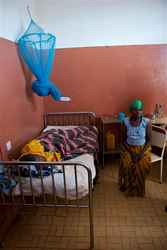
Mandimba town has a small, poorly staffed hospital, with a few beds. There is a shortage of medicines, dressings and bandages. There is a labour ward, but no provision for care of premature babies, and no surgery for caesarean delivery. A child health clinic is held on weekdays for weighing and immunizations.
A recent improvement is the Casa d'Espera (House of Hope), founded by our friend Francesca Keating, where pregnant women can stay as they near their due date, a great bonus for those who live a long walk from Central Mandimba.
Mitande has a newly built hospital, Massangulo has a Health Centre and Marcos Dezoito has no health facilities and is dependent on the outreach team visiting from Mandimba hospital - twice a year, weather and roads permitting.
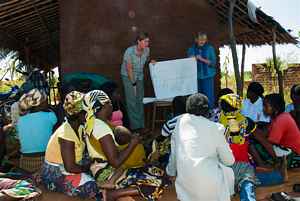
On visits to Mandimba and the outlying towns, we have covered topics such as Hygiene and the prevention of diarrhoea, Prevention of Malaria and use of mosquito nets (with a distribution of insecticide and nets), First Aid, Contraception, Care of the sick and dying, Immunization and childhood illnesses.
Tanja is a Midwife and I am a Nurse. This year we carried out a very intensive teaching programme with translation and management help from Rosa Nhone, who is head of the Mother’s Union in Lichinga (the Provincial capital of Niassa).
Our ‘students’ were members of the Mothers Union and local women, especially the young mothers.
We taught in churches, outside churches - anywhere with some shade! We answered questions, improvised to illustrate our talks, and afterwards gave baby clothes and soaps made or given by St Mary’s.
The Mother’s Union are very active in Mandimba, and visiting the sick is part of their role; they ask for our help and involvement when we are there and are very keen to pass on what they have learned from our classes. As Tim has described, we see people with very varied medical difficulties. We help medically where appropriate and provide financial assistance where it is of most benefit.
We have paid for fares to hospitals in Blantyre, Malawi, where more complex cases can be treated. We have also helped with purchases of equipment, such as a bicycle for a lad of nineteen who had his leg amputated after a car accident.
The wheelchair for Eduardo Mime will be purchased using part of a very generous donation from a St Mary’s family, ensuring that he no longer has to be carried everywhere. It is hoped that he can receive further medical help in Malawi, and costs can be met from this donation.
As requests come in from Mandimba, our Health Team here meets to discuss what help we can give. Michael Calimba, the Adepto (facilitator) sends us these, along with photographs of the children helped. Please pray for God’s guidance in what we try to do.
Carrie Lees